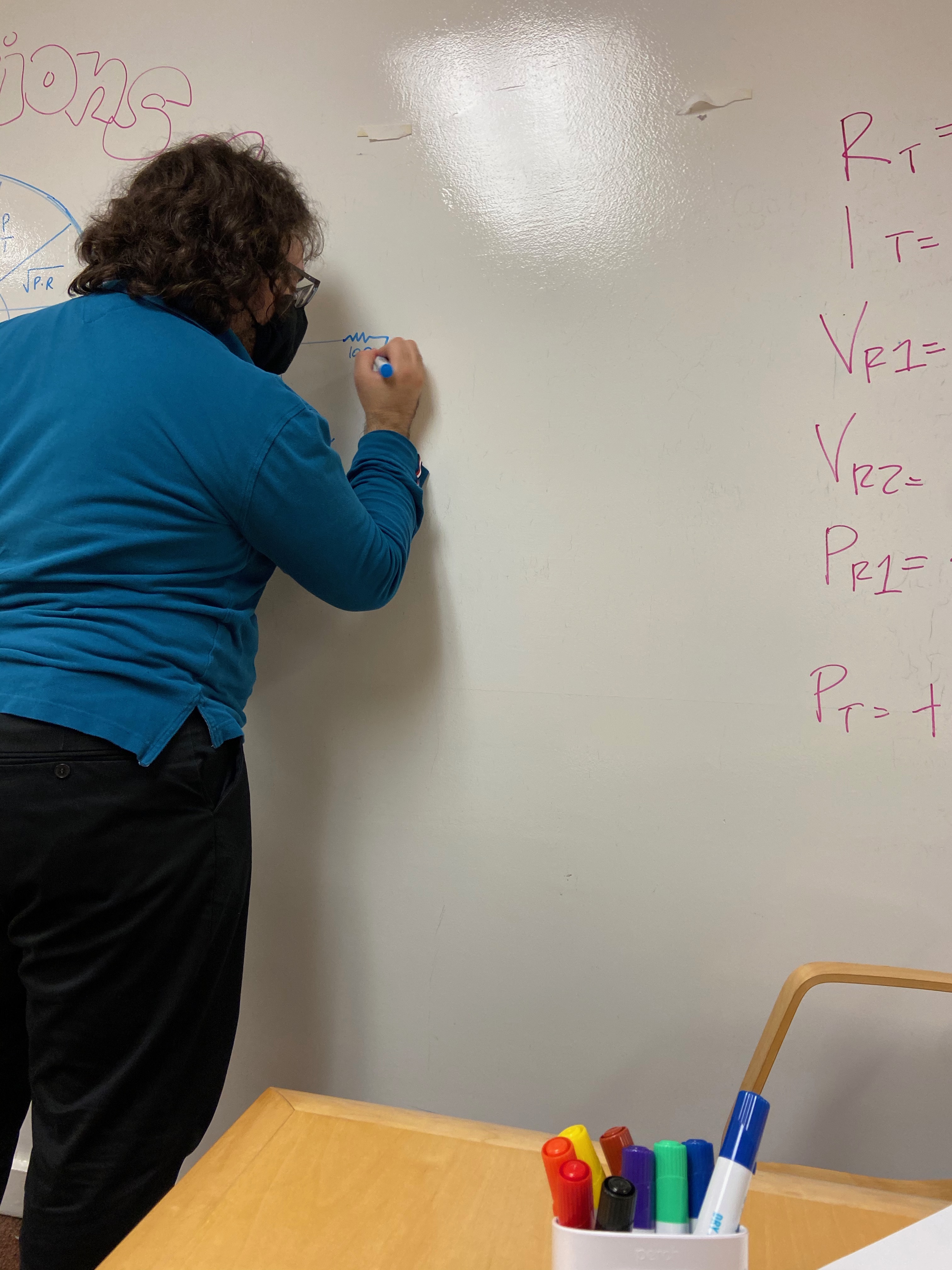Week 10 | Electronics part one
Electronics Week 1
The Water analogy can be compared to electrical currents with- Water equals Charge, Pressure equals Voltage, Flow equals Current. For example a water tank that is certain height above the ground, with a hose at the bottom of the tank. The pressure at the end of the hose can represent voltage. The water in the tank represents charge. The more water in the tank, the higher the charge, the more pressure is measured at the end of the hose. A closed circuit is where a the current can flow completely and with continuity thought the path. A open circuit is where the path has an opening/ has been interrupted that causes the current to not continue flowing. A short circuit is when the current finds a way to bypass the appliance on a path that has little or no resistance this causes too much current to flow than the current can handle. In a series circuit, all components are connected end-to-end, forming a single path for current flow. Series Circuit Rules: VT equals V1 plus V2 plus V3 plus..., IT equals I1 equals I2 equals I3 equals..., RT equals R1 plus R2 plus R3..., In a parallel circuit, all components are connected across each other, forming exactly two sets of electrically common points. In a parallel circuit you have branches, multiple paths to follow. You can use Ohm's Law (V=IR) at a single location just as series circuits. Overall Parallel Circuit Rules VT equals V1 equals V2 equals V3 equals IT equals I1 plus I2 plus I3 plus 1/RT equals 1/R1 plus 1/R2 plus 1/R3 plus To solve Complex Circuits, the goal is to break down all the different parts making act like one single series circuit.
above these images show tables I used to understand the SI unites and prefixes symbols - Here is the link to my homework problems in order. This page below also has images of all my work in order. Including extra notes. click here
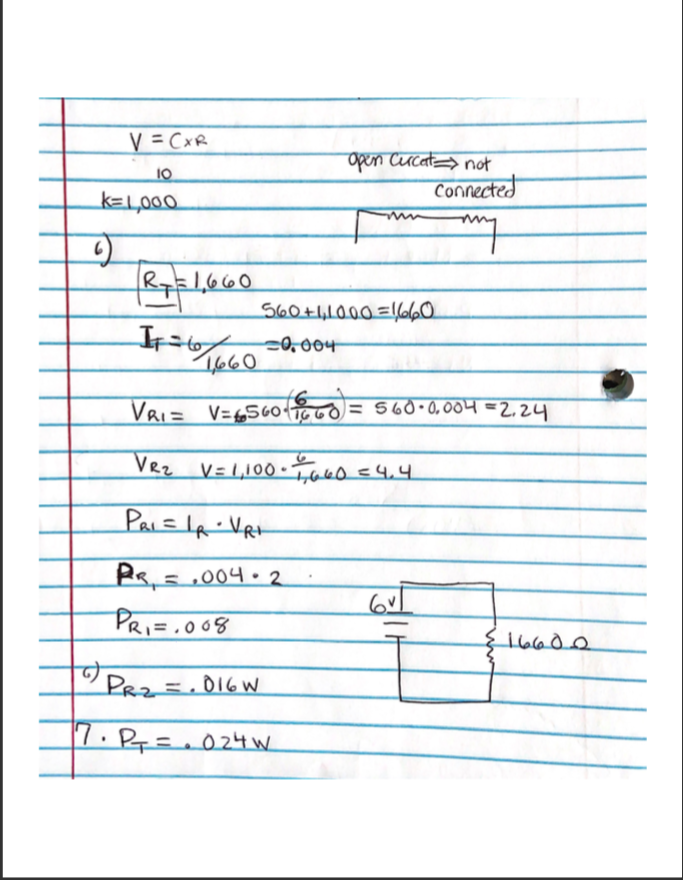

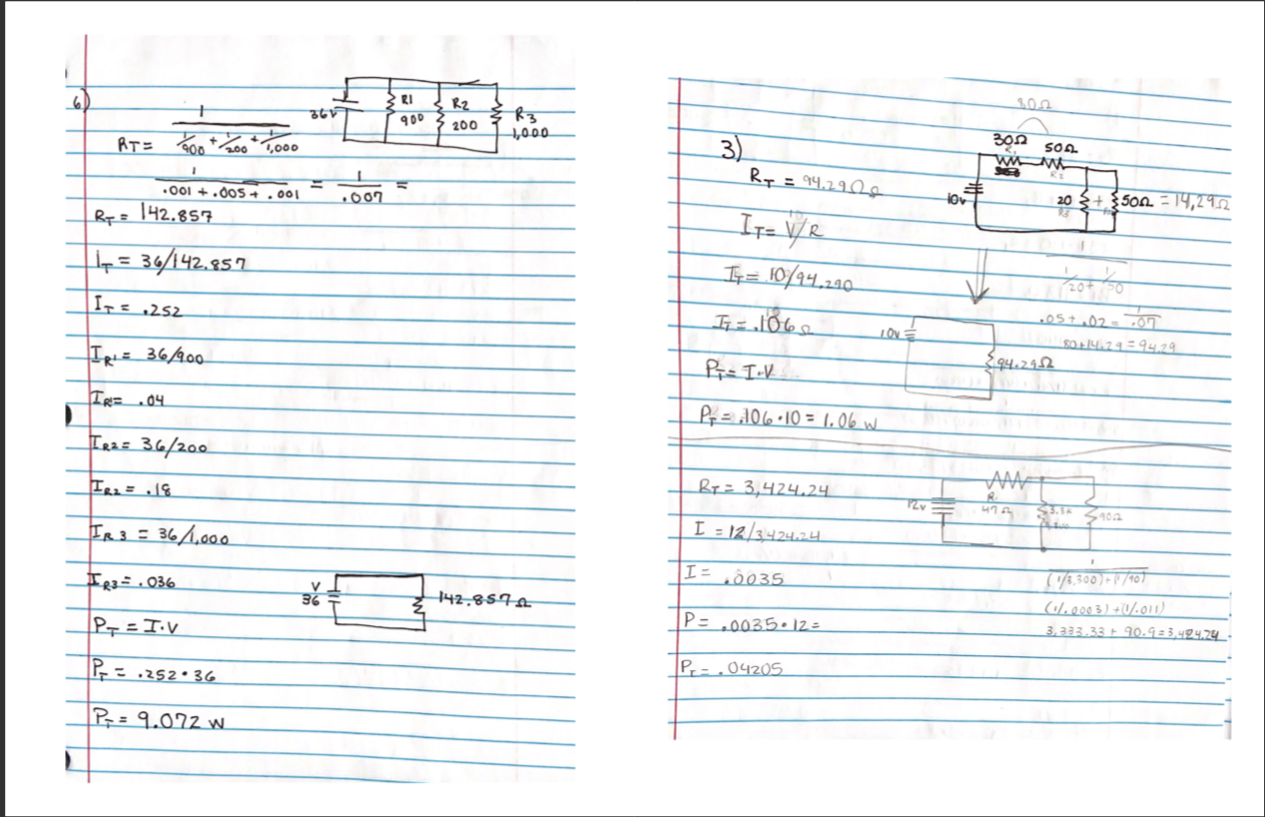
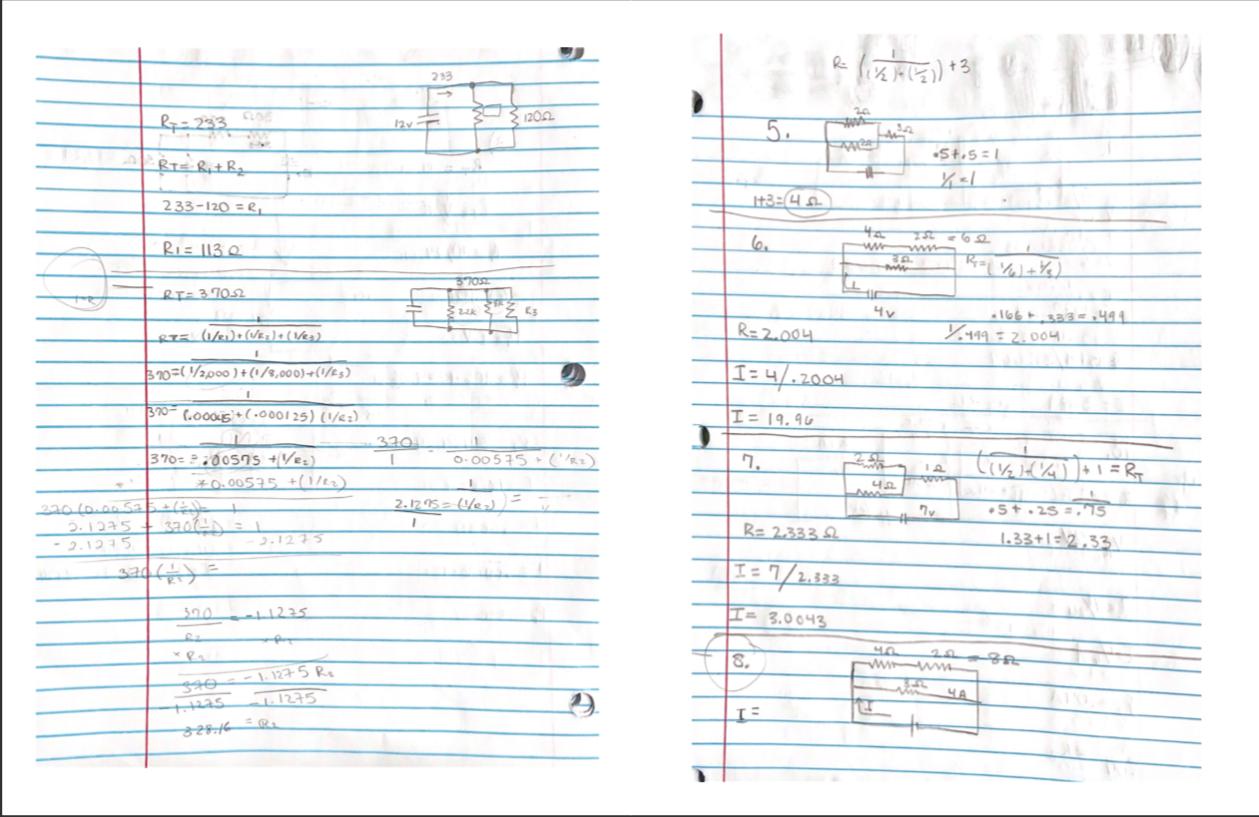
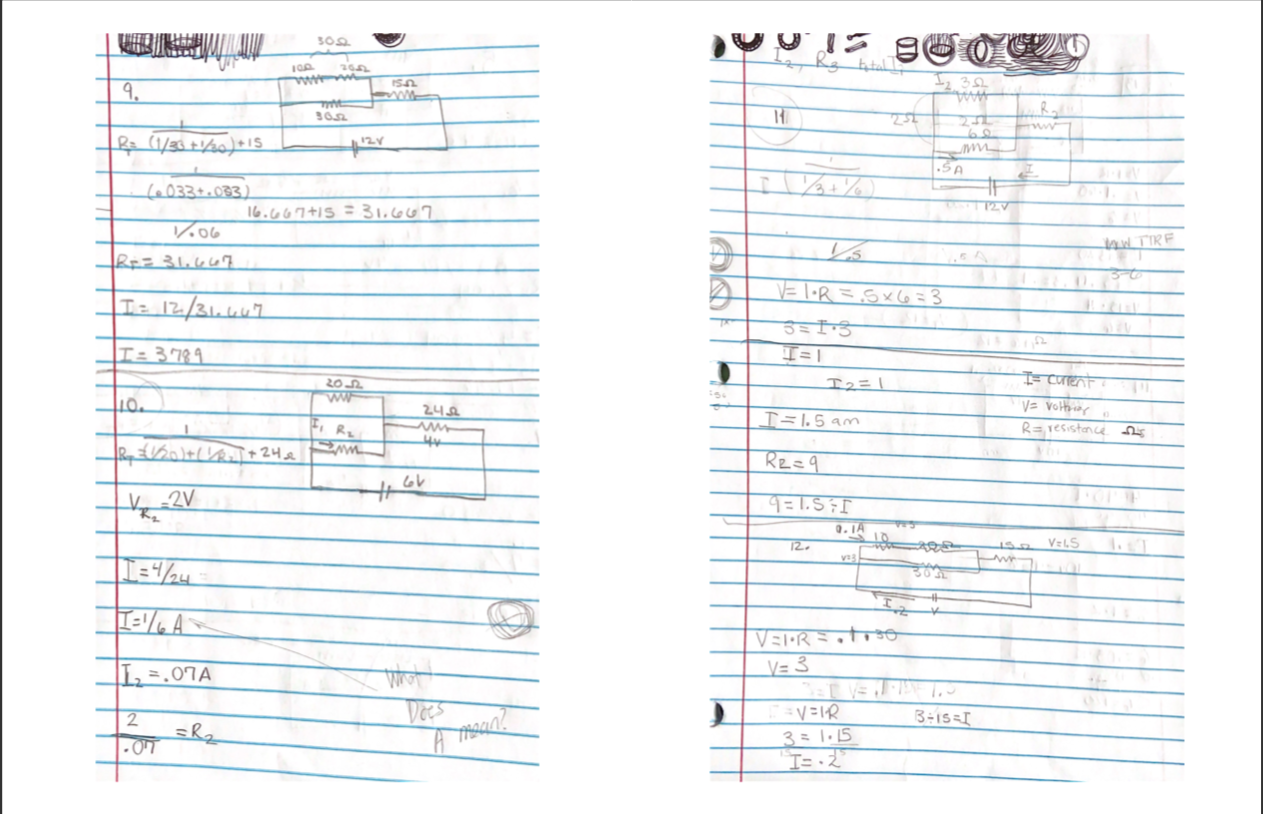
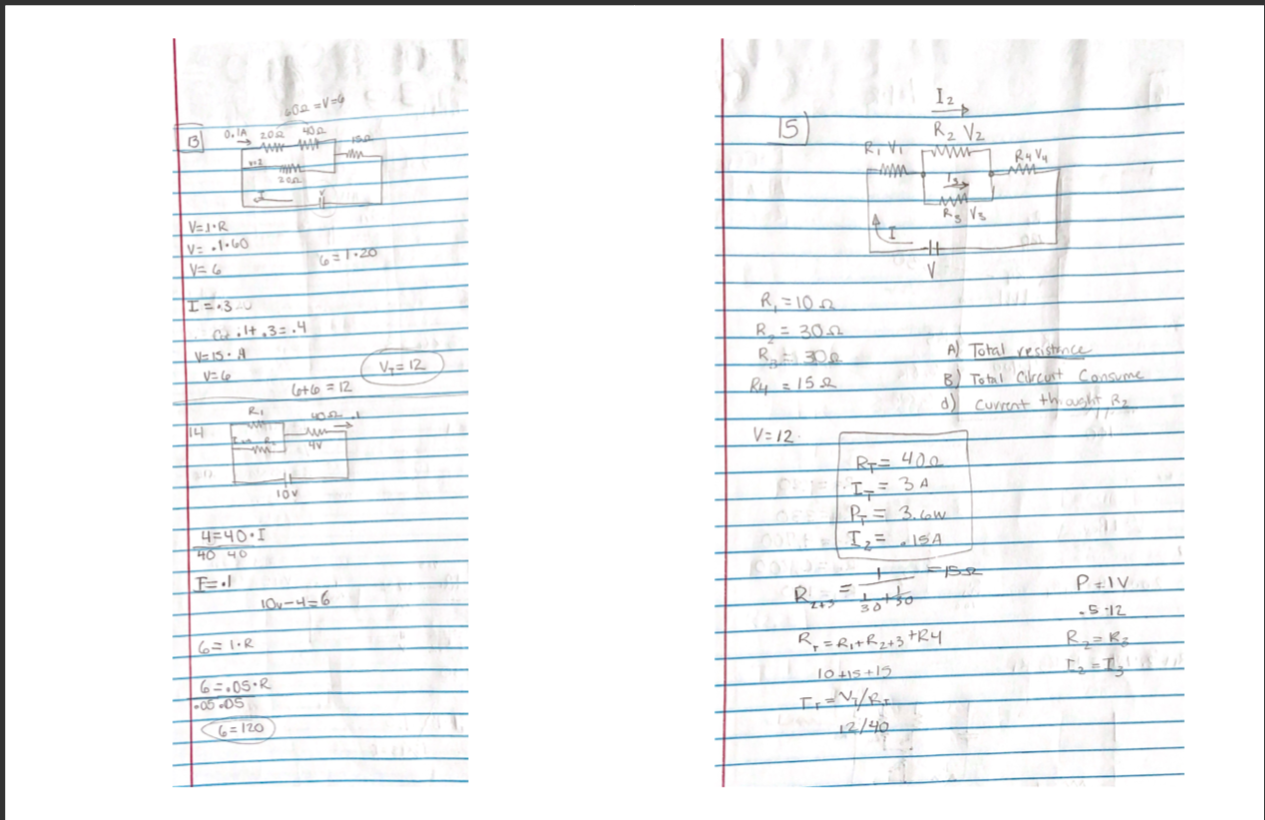
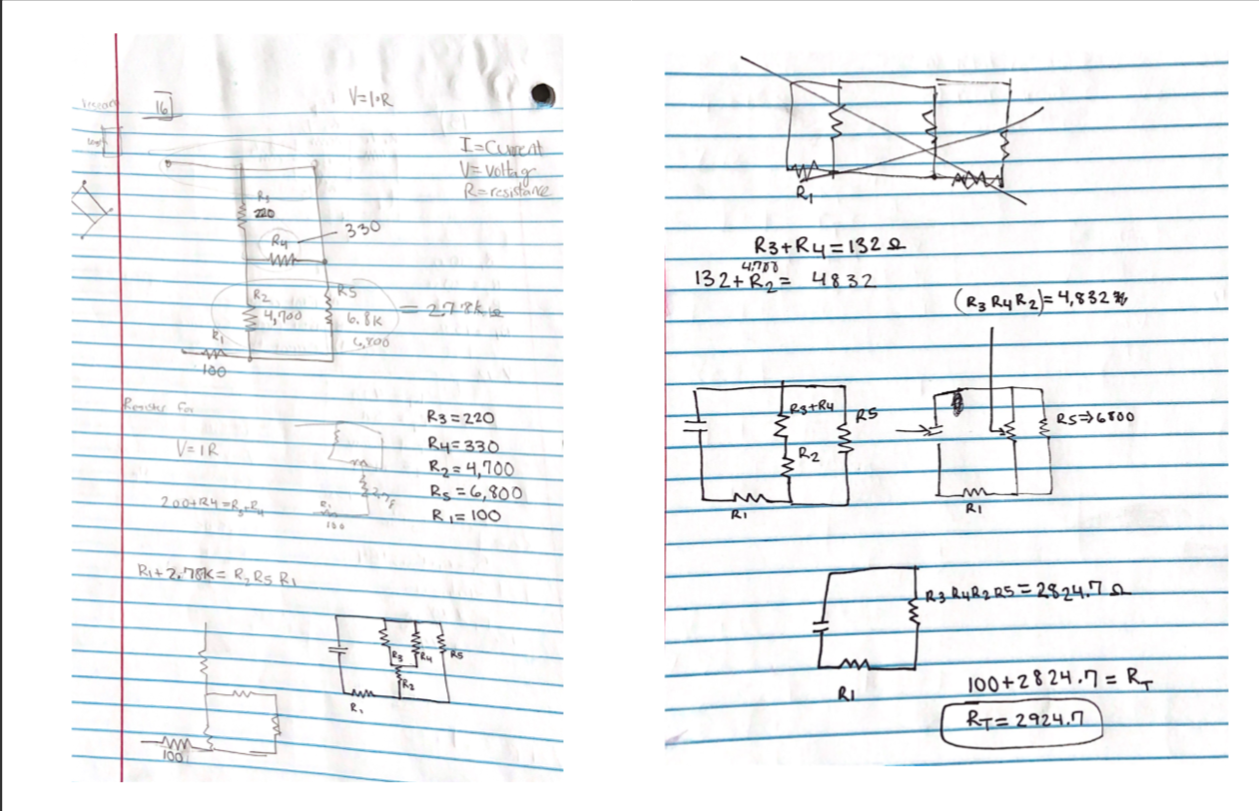
here is a little compilation of photos that show the amount of times I went in for help, and more work not shown on my paper.
